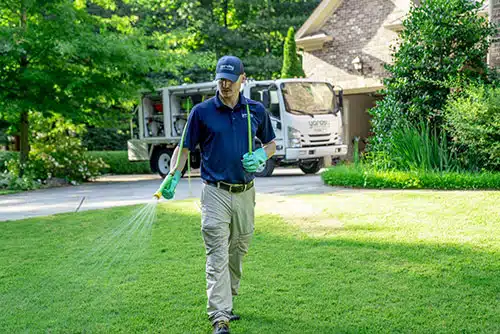Spring is upon us, and with the warmer weather and longer days, your lawn will soon start to flourish. However, this is also the time when spring weeds begin to sprout, potentially ruining the beauty of your garden. This article will guide you on how to tackle these pesky weeds, ensuring a healthy and vibrant lawn. We’ll cover the types of spring weeds, prevention methods, and effective removal techniques. So, let’s dive in!

1. Identifying Common Spring Weeds
Before you can effectively tackle spring weeds, it’s essential to know what you’re dealing with. Some common types of spring weeds include:
- Dandelions: These yellow-flowered weeds have deep taproots and can quickly spread throughout your lawn.
- Crabgrass: A highly invasive grassy weed, crabgrass can quickly take over your yard if left unchecked.
- Chickweed: This low-growing weed forms a dense mat and can smother your lawn.
- Clover: While some people consider clover a desirable addition to their lawn, many view it as an unwanted weed.
2. Prevention is Key
The best way to maintain a weed-free lawn is to prevent their growth in the first place. Here are some helpful tips to keep spring weeds at bay:
- Mow Regularly: Keeping your grass at the appropriate height can help prevent weed growth. Taller grass shades the soil, making it more difficult for weed seeds to germinate.
- Fertilize Properly: A well-fertilized lawn will be more resistant to weed invasions. Make sure you’re using the right type and amount of fertilizer for your specific grass type.
- Aerate Your Lawn: Aerating your lawn in the spring can improve soil structure and encourage healthy grass growth, which can help prevent weeds from taking hold.

3. Effective Weed Removal Techniques
If you find yourself dealing with spring weeds despite your prevention efforts, here are some effective removal techniques to consider:
- Hand-Pulling: For small areas with just a few weeds, hand-pulling can be an effective method. Be sure to remove the entire root to prevent regrowth.
- Selective Herbicides: If you choose to use chemical weed control, opt for selective herbicides designed specifically for the weeds you’re targeting.
4. Post-Weed Treatment Lawn Care
Once you’ve removed the spring weeds from your lawn, it’s essential to continue with proper lawn care to keep them from coming back:
- Watering: Ensure your lawn receives the right amount of water, as both over- and under-watering can stress your grass, making it more susceptible to weeds.
- Overseeding: Fill in any bare spots in your lawn by overseeding with a high-quality grass seed. A thick, healthy lawn will help prevent weeds from taking hold.
- Regular Maintenance: Continue with regular mowing, fertilization, and aeration to keep your lawn healthy and weed-free.
Conclusion:
Spring weeds can be a frustrating problem for homeowners, but with the right knowledge and techniques, you can effectively tackle these unwelcome invaders. By properly identifying the types of weeds in your lawn, employing prevention methods, and using effective removal techniques, you can enjoy a healthy and beautiful lawn all season long. Don’t forget to follow up with proper lawn care to keep those pesky weeds from making a comeback!



















































